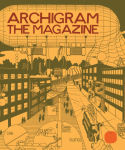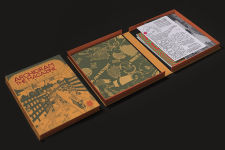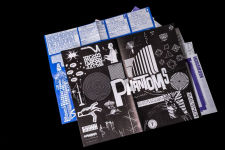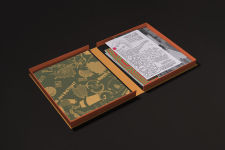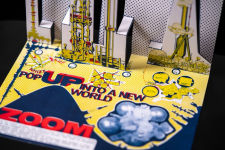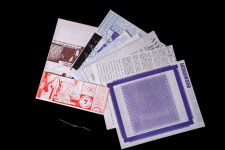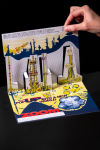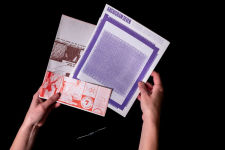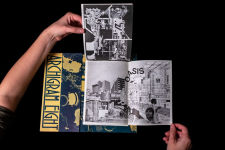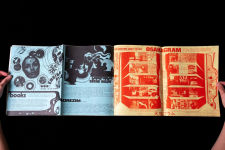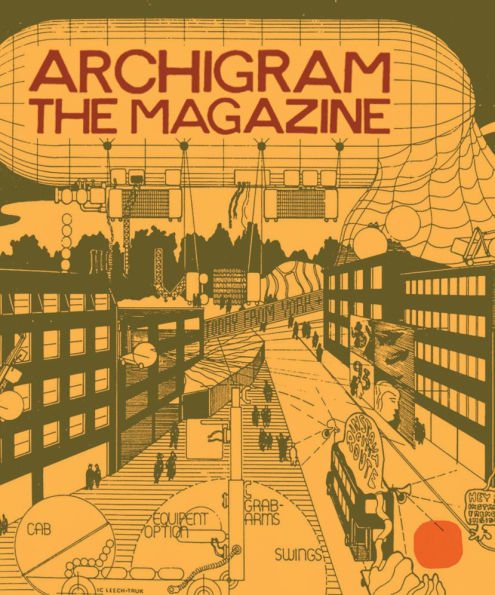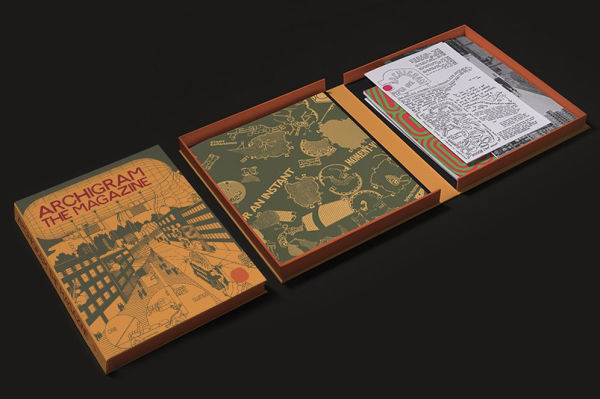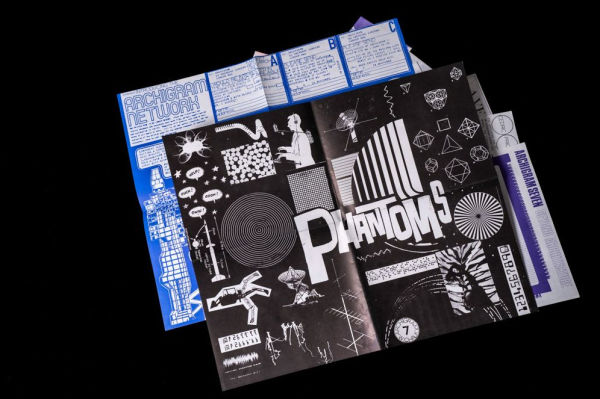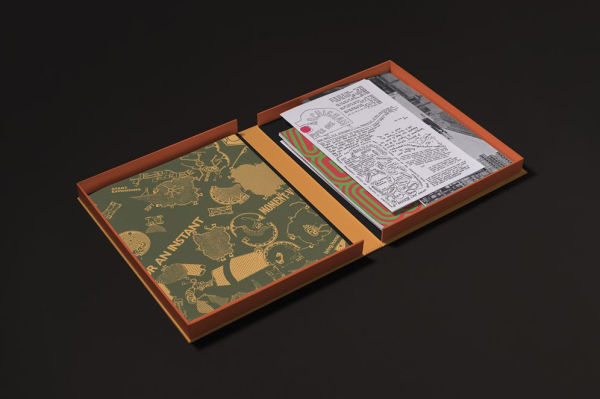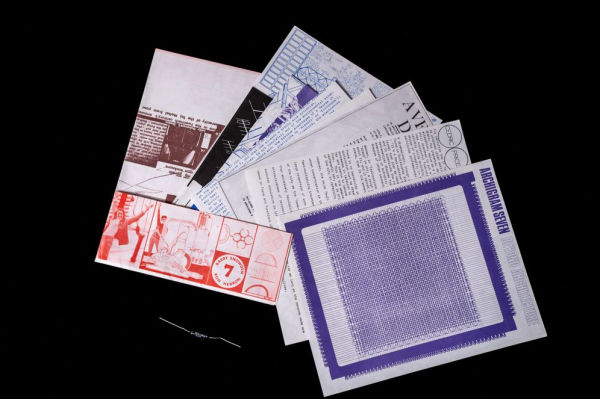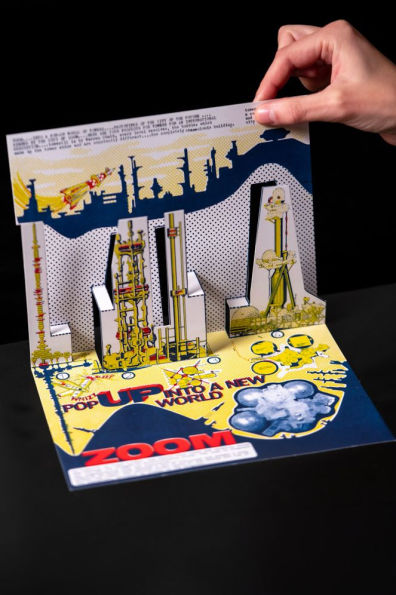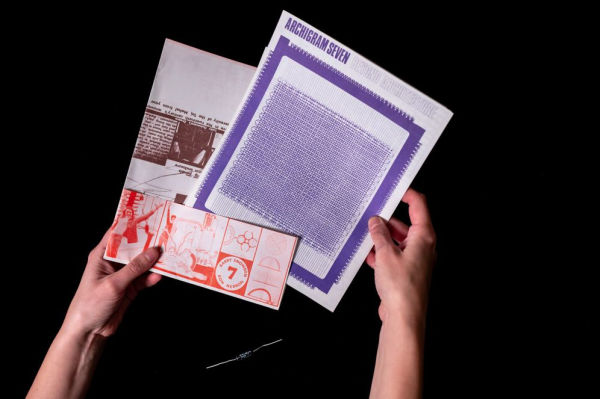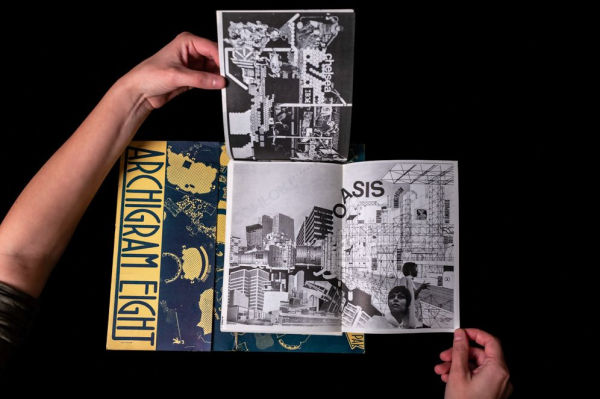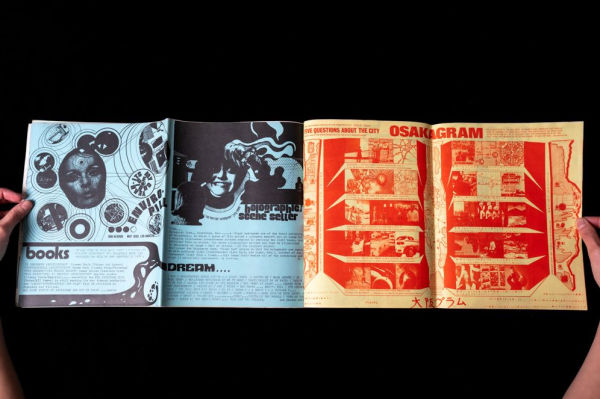Architecture's most influential, innovative and beloved underground magazine, reissued for the first time in a handsome clamshell box
Inspired by comic-book culture, Pop art, psychedelia, the space race, sci-fi, Constructivism and Buckminster Fuller, the hugely influential British collective Archigram were the epitome of 1960s avant-garde architecture. Their self-published, lo-fi but materially ingenious magazine Archigram, begun in 1961, announced their ideas for such visionary concepts as "Walking City," "Plug-In City" and "Instant City." It also served to connect the international avant-garde of the 1960s. Archigram forged links with the Metabolists in Japan, Frei Otto, Utopie and Haus-Rucker-Co in Europe, and Buckminster Fuller in the US. They were also championed by critics such as Charles Jencks and Reyner Banham, who brought Archigram's famous fourth pop-up issue to the US in 1966. Today Archigram is one of the rarest major small-press publications of the 1960s, with individual issues selling for a minimum of $600.
Archigram's influence has proved enduring, perhaps most famously in its widely acknowledged impact on Richard Rogers' and Renzo Piano's Centre Pompidou. Its members also taught and influenced the likes of Bernard Tschumi and Zaha Hadid, and inspired a later generation of nineties and naughties modernists embracing the potential of technology such as Future Systems, Foreign Office Architects, Diller Scofidio + Renfro, Anthony Dunne and Fiona Raby.
This authorized publication features exacting facsimiles of all 10 issues (from number 1 in 1961 to the final issue 9 1/2 in 1974). All the original surprises and idiosyncrasies are faithfully reproduced: flyers, pockets, a pop-up centerfold, posters, gatefolds and an electronic resistor. Accompanying the facsimile issues is a fully illustrated reader's guide featuring essays by Peter Cook, David Grahame Shane and Reyner Banham; tributes from the architectural community including Tadao Ando, Kenneth Frampton, Norman Foster, Zamp Kelp, David Rockwell and Patrik Schumacher; an index of key concepts and contents; a scrapbook of previously unseen archival images; a bibliography of the partners' publications; and biographies.
The architect-collaborative group Archigram was established in London by Warren Chalk, Peter Cook, Dennis Crompton, Ron Herron, David Greene and Michael Webb. Working together until 1975, the group operated as an experimental thinktank, producing a magazine, projects, models, exhibitions and proposals that represented a shift in how architectural practice is considered, prioritizing processes and responsive structures for living over the notion of architecture as a static, form-based commodity. Influenced by popular culture and responding to the proliferation of technological advances at the time, as well as recognizing the increasing social and political discontent, Archigram's production emphasized mobility and flexibility in ways that continue to have currency today.
Architecture's most influential, innovative and beloved underground magazine, reissued for the first time in a handsome clamshell box
Inspired by comic-book culture, Pop art, psychedelia, the space race, sci-fi, Constructivism and Buckminster Fuller, the hugely influential British collective Archigram were the epitome of 1960s avant-garde architecture. Their self-published, lo-fi but materially ingenious magazine Archigram, begun in 1961, announced their ideas for such visionary concepts as "Walking City," "Plug-In City" and "Instant City." It also served to connect the international avant-garde of the 1960s. Archigram forged links with the Metabolists in Japan, Frei Otto, Utopie and Haus-Rucker-Co in Europe, and Buckminster Fuller in the US. They were also championed by critics such as Charles Jencks and Reyner Banham, who brought Archigram's famous fourth pop-up issue to the US in 1966. Today Archigram is one of the rarest major small-press publications of the 1960s, with individual issues selling for a minimum of $600.
Archigram's influence has proved enduring, perhaps most famously in its widely acknowledged impact on Richard Rogers' and Renzo Piano's Centre Pompidou. Its members also taught and influenced the likes of Bernard Tschumi and Zaha Hadid, and inspired a later generation of nineties and naughties modernists embracing the potential of technology such as Future Systems, Foreign Office Architects, Diller Scofidio + Renfro, Anthony Dunne and Fiona Raby.
This authorized publication features exacting facsimiles of all 10 issues (from number 1 in 1961 to the final issue 9 1/2 in 1974). All the original surprises and idiosyncrasies are faithfully reproduced: flyers, pockets, a pop-up centerfold, posters, gatefolds and an electronic resistor. Accompanying the facsimile issues is a fully illustrated reader's guide featuring essays by Peter Cook, David Grahame Shane and Reyner Banham; tributes from the architectural community including Tadao Ando, Kenneth Frampton, Norman Foster, Zamp Kelp, David Rockwell and Patrik Schumacher; an index of key concepts and contents; a scrapbook of previously unseen archival images; a bibliography of the partners' publications; and biographies.
The architect-collaborative group Archigram was established in London by Warren Chalk, Peter Cook, Dennis Crompton, Ron Herron, David Greene and Michael Webb. Working together until 1975, the group operated as an experimental thinktank, producing a magazine, projects, models, exhibitions and proposals that represented a shift in how architectural practice is considered, prioritizing processes and responsive structures for living over the notion of architecture as a static, form-based commodity. Influenced by popular culture and responding to the proliferation of technological advances at the time, as well as recognizing the increasing social and political discontent, Archigram's production emphasized mobility and flexibility in ways that continue to have currency today.

Archigram: The Magazine
288
Archigram: The Magazine
288
Product Details
| ISBN-13: | 9781933045856 |
|---|---|
| Publisher: | D.A.P./Distributed Art Publishers |
| Publication date: | 11/18/2025 |
| Pages: | 288 |
| Product dimensions: | 12.50(w) x 15.00(h) x 0.00(d) |
